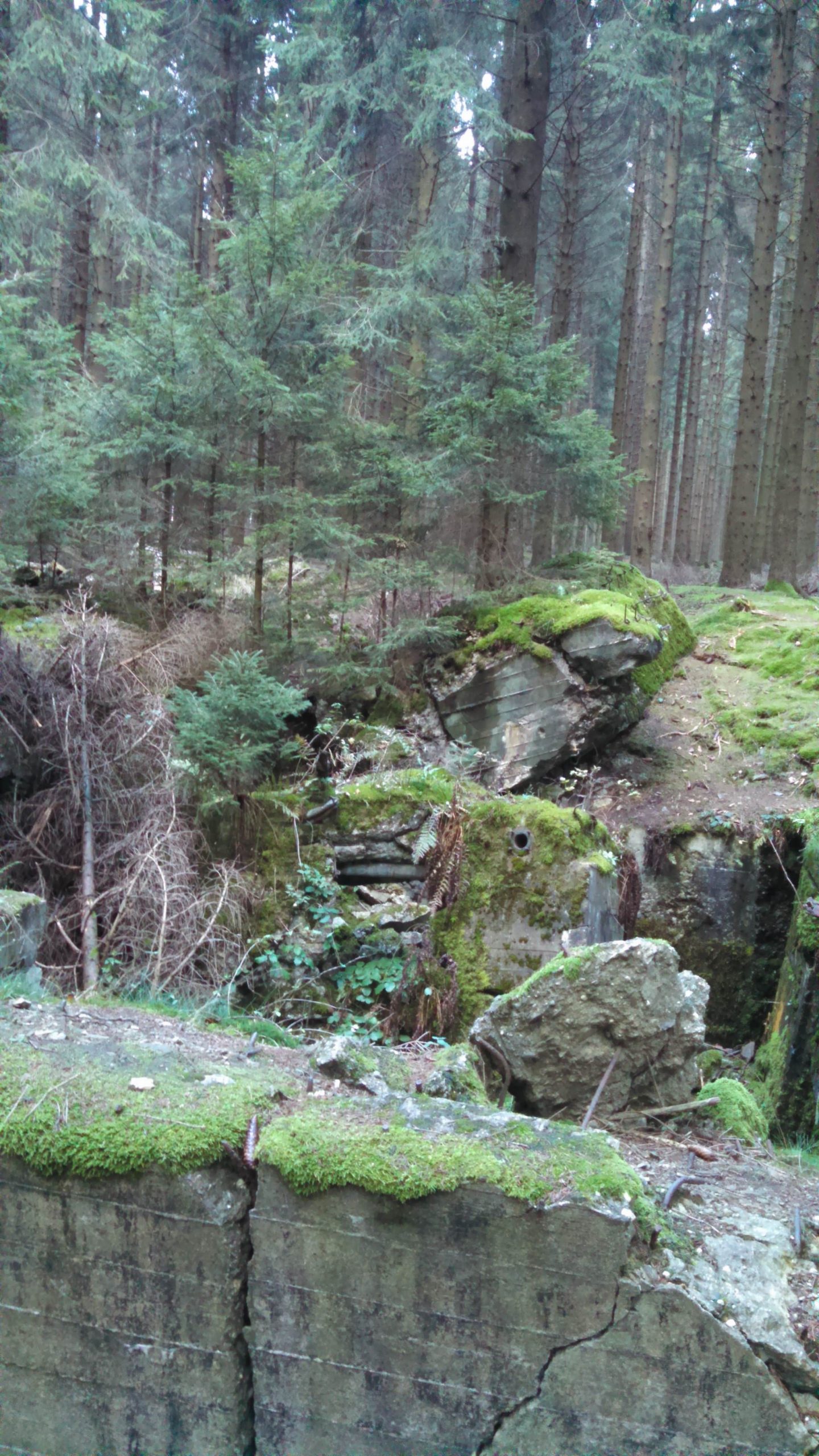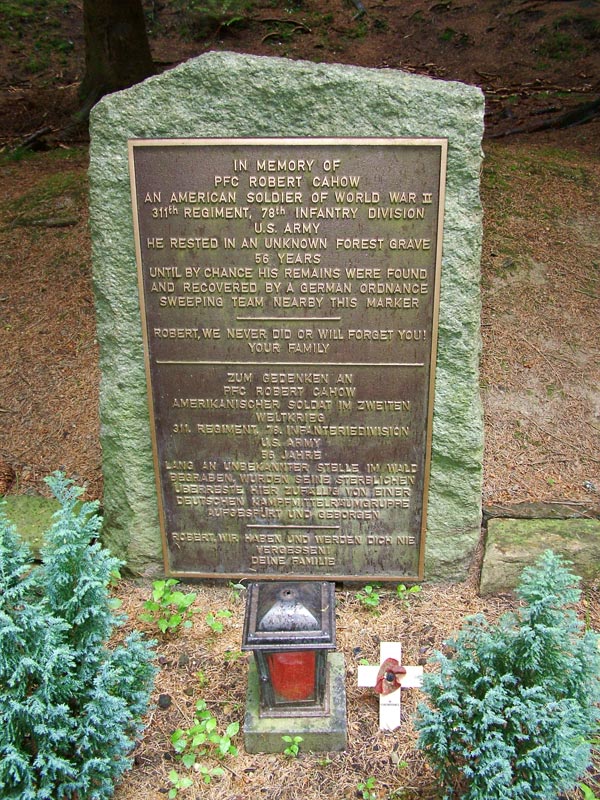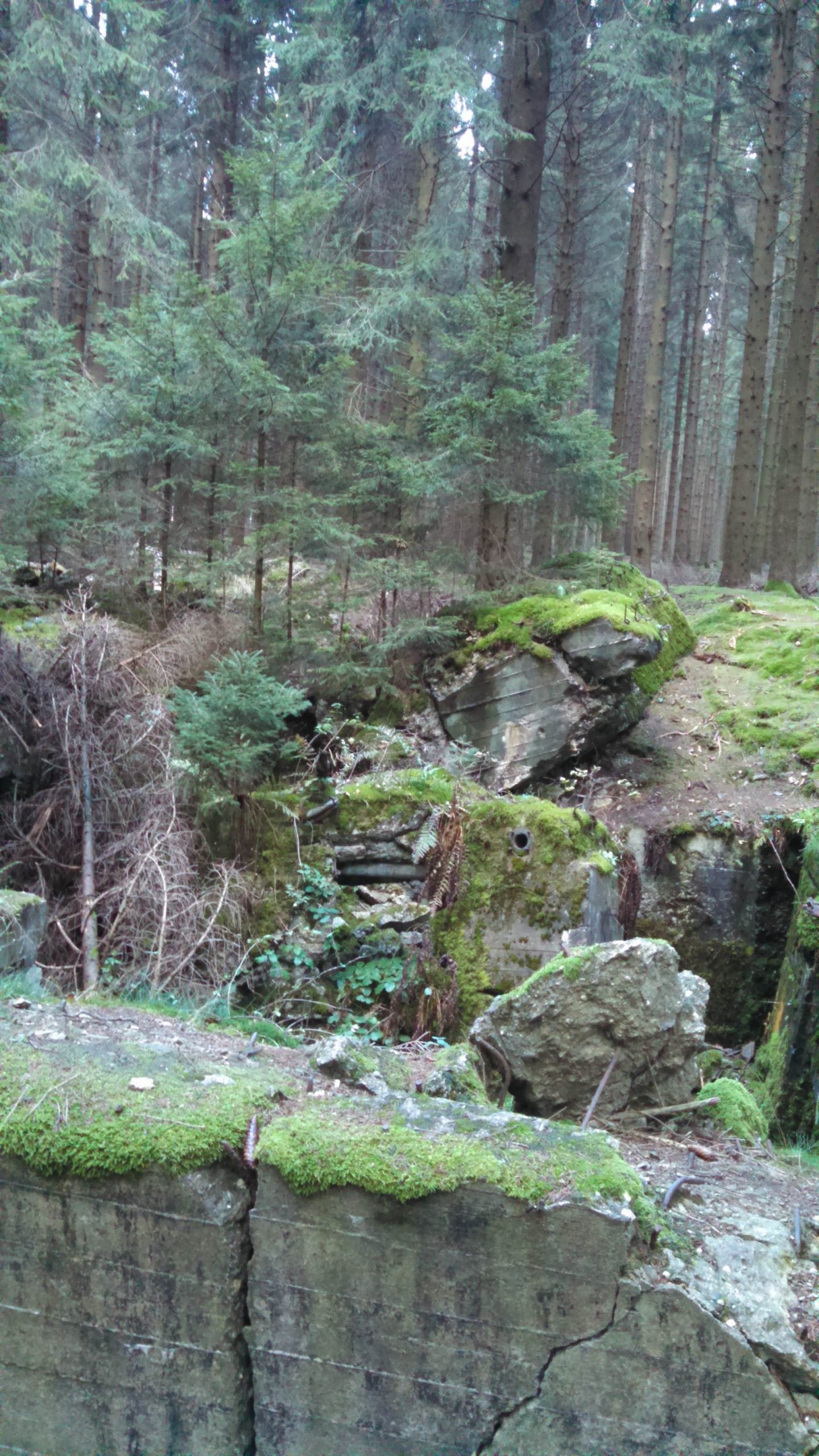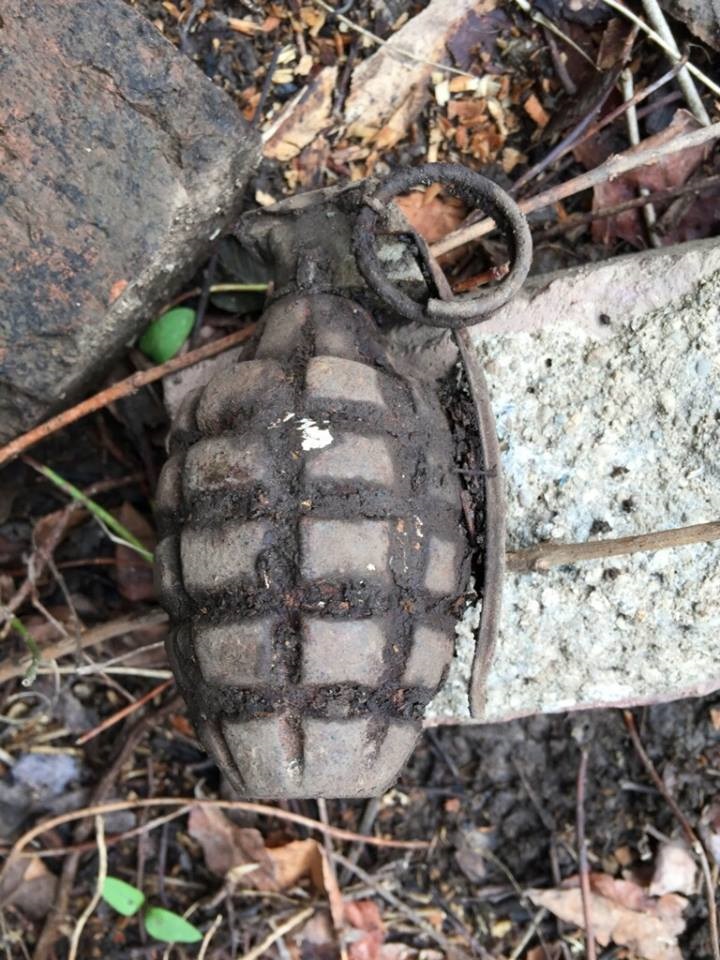As the number of American divisions was fixed at eighty-nine, there weren’t always enough idle divisions available to relieve divisions that were actively engaged, and the ones in combat relied on replacements (officers also) to maintain their effectiveness (Rush, Hell in Huertgen Forest: The Ordeal and Triumph of an American Infantry Regiment, 302). The existing system provided men with basic training, and further training, if required, was provided in the field. In the Hürtgen, that often meant that men with minimal training were rushed to the front, sometimes not even knowing what unit they were assigned to before being injured or killed (Neillands, The Battle for the Rhine, The Battle of the Bulge and the Ardennes Campaign, 1944, 242, 251).
They were replacing men with valuable combat experience while making mistakes attributable to their inexperience – bunching up, talking loudly, giving away their position – and lacking the additional knowledge and skills necessary to survive in the unique battlefields in which they’d just arrived. These mistakes not only reduced their effectiveness by keeping their performance at a lower level weakening the unit as a whole but also creating division within units as the few remaining veterans often avoided the newer men whose mistakes were liable to get them wounded or killed. Veteran was also a subjective term, as men who’d simply survived a few days were labeled as such. Between constant combat that reduced available training time and frequent veteran reluctance to fraternize with newer men, valuable lessons that should have been passed from experienced to inexperienced soldiers were not shared, and units that enjoyed paper strength did not always possess full combat effectiveness (Rush, Hell in Huertgen Forest: The Ordeal and Triumph of an American Infantry Regiment, 320-321)
High casualties amongst officers also caused similar problems, as new leaders with no experience with either combat or the men under them were to lead them into battle; total strangers who’d never met one another and had little in common aside from a common uniform rushed into battle together, with insufficient training and little cohesion – inexperience at all levels eventually caused more inexperience, which in turn contributed to higher casualties, necessitating the need for more inexperienced replacements. The American replacement system was designed to maintain the administrative effectiveness of the organization, at the expense of the individual – it kept units at paper strength, but not always at practical fighting strength, (Miller, A Dark and Bloody Ground: The Huertgen Forest and the Roer River Dams, 1944-1945, 207) and this greatly affected the men fighting in the interminable gloom and misery of the Hürtgen Forest.
The fighting in the Hürtgen Forest also had the unintended result of turning back the clock of warfare to some extent and became a negative struggle for territory reminiscent of the Meuse-Argonne campaign near the end of WW-1 (Allen R. Millett & Peter Maslowski, For the Common Defense: A Military History of the United States of America (New York: Simon & Schuster, 1994), 474) dominated by close-quarters infantry combat, frontal assaults, and artillery duels. The drive to batter through the Siegfried Line and cross the Roer River toward the Rhine carried the American army into the Huertgen Forest, where resistance, if any, was expected to be minimal – when the U.S. Army was surprised by heavy German resistance there, it responded in kind – and the battle grew into its war, seemingly insulated from the greater war, diverting the American invaders from their initial purpose. It became a sort of black hole, eating up lives and military assets at a pace barely sustainable by its combatants, but no one could afford to leave as long as the enemy remained; the Americans had to eliminate the threat to its flanks, and the Germans had to hide and protect their planned breakout. And so, the carnage in the Huertgen escalated and may have continued unabated for the unforeseeable future were it not swallowed up the Battle of the Bulge, in which the Germans expended the last of their offensive capability. Until the Bulge occurred, 1-A’s Gen Hodges stubbornly protected his southern flanks by feeding a chain of infantry divisions into the forest, hoping for that breakthrough that the next division might provide. Though the fighting in the Forest had the unintended and accidental result of destroying four German divisions that may have faced the Americans and changing the face of the German breakout later in Dec, (Margry, The Battle of the Huertgen Forest, 34) it also expended valuable American resources and the forest itself was a diversion from his stated purpose of breaking through the Siegfried Line and advancing east to the Rhine.
Though he cannot be faulted for attempting to secure the southern flank of the forest, Bradley and Hodges could also have attempted containment of the forest after meeting the first German resistance and forsaken the eventual siege of the forest, towns, and road nets within it; the delay in the forest allowed Germany to retain control of the dams until Feb 1945 (Miller, A Dark and Bloody Ground: The Huertgen Forest and the Roer River Dams, 1944-1945, 209-211).
With containment of the forest and a more southerly move between the Huertgen and Ardennes Forests through the so-called Monschau Corridor, the US Army would have been able to move through clear terrain (Terdoslavich, “Battle of Huertgen Forest”, 212) and assault the dams much earlier in the fall of 1944, completely cutting off the Germans in the Hürtgen; without reinforcements and supplies, German resistance would have lessened or stopped and the Battle of the Huertgen Forest, as it were, may not have occurred at all, (Charles B. MacDonald, The Battle of the Huertgen Forest, 199) and become the loser that our top brass ever after never seemed to want to talk about (Ambrose, Citizen Soldiers: The U.S. Army from the Normandy Beaches to the Bulge to the Surrender of Germany: June 7, 1944 – May 7, 1945, 169). Though well-intentioned and grounded in military doctrine, Hodges’ desire to protect his southern flank spun out of control and without coherent strategic direction, became an invasion of the Hürtgen Forest and a war in itself. By committing fully to the forest, the US Army’s advantages in manpower and materiel were negated by the terrain, with the impassable forest hampering the movement of men and supplies and severely limiting the effectiveness of armor, artillery, and air power – three linchpins of American doctrine. The battle became an infantry struggle reminiscent of WW-1, with commanders who were unfamiliar with the terrain repeatedly committing troops to frontal assaults against a fortified and prepared enemy.
The replacement system of the time, impersonal and often inefficient, ensured that army divisions remained at paper strength when in reality, undertrained and unprepared men were rushed into combat and quickly became casualties themselves, necessitating the insertion of more men of similar caliber. The true goals of the campaign in this sector, the Roer River and its dams were acknowledged by commanders but did not play a role in strategic planning until the fighting in the Huertgen had reached a crescendo, just before being overshadowed by a new threat – Adolf Hitler’s last-ditch Ardennes Offensive. Other strategic options, such as containment of the forest or thrusts directed through more suitable terrain in weakly-defended sectors, were not explored until after the opportunity had passed, and valuable time and costly resources had been expended in the acquisition of intrinsically useless territory.
The grinding combat in the Huertgen Forest had no effect on the eventual outcome of the war and was swallowed up by the larger campaigns in the region – by all accounts, the United States Army won the forest but lost the battle, and it was allowed to fade into relative obscurity, remembered mostly by those who were there. In the years that followed, the forest debacle became a historical footnote, and the same men who engineered the successful Normandy invasion eventually distanced themselves from the disaster in the Huertgen Forest: victory has many fathers, but defeat is an orphan.
Gen Normand Dutch Cota – CG 28-ID
Gen Cota hoped to remain on active duty and perhaps be promoted to Lieutenant General. He had sent several letters to the Army G-1 requesting a variety of duty assignments but none of the letters were answered. With the war over and the army about to go through an enormous draw-down, he was ordered to take a physical. The writing was on the wall. Aged fifty-two and found to have a mild form of diabetes, he was directed to retire. With some regret, Dutch Cota became a civilian after twenty-eight years of military service. Postwar, he would become heavily involved in civil-defense work for the city of Philadelphia and was very active in a variety of veteran’s activities. Dutch died on Oct 4, 1971, at age seventy-eight. He was buried alongside his wife Connie, at West Point.
Today, the hero of Omaha Beach and St Lô is largely forgotten. The Fighting General, whose division fought for eleven vicious months from Normandy to the Rhine and beyond, can teach us much about organizational leadership and leadership in combat. Though his division was destroyed in two weeks of the most difficult combat conditions imaginable, it was rebuilt, only to continue fighting until the final victory was achieved. Maj Gen Norman ‘Dutch’ Cota should be remembered for his heroic leadership, the example he set for others to emulate, and the lessons that can be learned when things don’t go right in combat. There are many lessons to be learned from this case study about Gen Cota and the 28-ID’s experiences during the battle of the Hürtgen Forest which encompass the art and science of battle command, its elements, and components for future leaders and commanders to analyze and consider.
Selected Bibliography
Ambrose, Stephen E. Citizen Soldiers (Amazon)
The US Army from the Normandy Beaches to the Bulge to the Surrender of Germany June 7, 1944 – May 7, 1945. New York, Simon & Schuster, 1997
Astor, Gerald The Deadly Forest (Amazon
World War II, (November 2004)
Auchinloss, Sloan Perspectives (Out of Print)
Three Cease-Fires Temporarily Halted the Bloodshed in the Hurtgen Forest and Saved the Lives of Many Wounded. World War II, (November 1999)
Colley, David Horror in the Hurtgen Forest
VFW, Veterans of Foreign Wars Magazine, (November 1994)
Combat Studies Institute US Army Command and General Staff College
Battlebook 11-A Heurtgen Forest
Maj Steve Snow, et al. Combat Studies Institute. Fort Leavenworth, 1984
Davies, Norman No Simple Victory
World War II in Europe, 1939-1945. New York: Penguin, 2006
Devitt, William L. Surprised Outside Strass
World War II, (Jan/Feb 2006)
Doyle, Brian Hurtgen
US Catholic, (April 2006)
Duke, Paul A Catastrophic Battlefield
The Virginia Quarterly Review, (Autumn 2002)
Dupuy and Dupuy Encyclopedia of Military History (Amazon)
From 3500 B.C. to the Present. New York: Harper and Row, 1970
Eilenberg David and Glass Jessica On Common Ground (Amazon)
DVD. Directed by David Eilenberg and Jessica Glass. New York, NY Hart Sharp Entertainment, 2001
Fawcett, Bill ed. How To Lose WW-II
Bad Mistakes of the Good War. New York Harper, 2010
Ferrell, Bruce K. The Battle of Aachen
Armor, (Nov/Dec 2003)
Gavin, James Bloody Huertgen
The Battle That Should Never Have Been Fought. American Heritage, (Dec 1979)
Greene, Vernon E. As I Saw It
The Eyewitness Report of a Soldier Who Fought During World War II and Survived. Special Warfare, (Sept 2002) Citizen Soldiers
Griesbach, Marc F Combat History of the 8-ID
World War II. 1945, Reprint, Nashville: Battery Press, 1988
Hart, B. H. Liddell History of the Second World War
New York: Capricorn Books, 1972
Hechler, Ken Rout in the Rhineland
VFW, Veterans of Foreign Wars Magazine, (March 1995)
Jordan David and Weist Andrew Atlas of World War II
London Amber Books, 2008
Keegan, John The Second World War
New York: Penguin, 1990
Kolb, Richard K. 4th Fights Through Four Wars
VFW, Veterans of Foreign Wars Magazine, (February 2007)
MacDonald, Charles B. The Battle of the Huertgen Forest (Amazon)
Philadelphia: University of Pennsylvania Press, 1963.
MacDonald, Charles B. Victory in Europe, 1945 (Amazon)
The Last Offensive of World War II. Mineola: Dover Publications, 2007
Mansoor, Peter R. The G.I. Offensive in Europe
The Triumph of American Infantry Divisions, 1941-1945. Lawrence: University Press of Kansas, 1999
Margry, Karel The Battle of the Hurtgen Forest
After the Battle, (May 1991)
Marquart, Jay Going the Distance with the Old Reliables
World War II, (February 2004)
Miller, Edward G. A Dark and Bloody Ground
The Hurtgen Forest and the Roer River Dams, 1944-1945. College Station: Texas A & M University Press, 1995
Miller Edward G. and Zabecki David T. Tank Battle in Kommerscheidt
World War II, (November 2000)
Millett Alan R. and Peter Maslowski For the Common Defense
A Military History of the United States of America. New York: Simon & Schuster, 1994
Murray G.E. Patrick Eisenhower as Ground-Forces Commander
The British Viewpoint. Transactions of the American Philosophical Society, (2007)
Neillands, Robin The Battle for the Rhine
The Battle for the Bulge and the Ardennes Campaign, 1944. New York: Overlook Press, 2005
Phillips, William R. D-Day Was Not His Longest Day
World War II, (May 2002)
Pursley, John C. Fire Missions from the Roer to the Elbe
Military History, (December 1998)
Rush, Robert Sterling A Different Perspective
Cohesion, Morale, and Operational Effectiveness in the German Army, Fall 1944. Armed Forces and Society, (Spring 1999)
Rush, Robert Sterling Hell in Hurtgen Forest
The Ordeal and Triumph of an American Infantry Regiment. Lawrence University Press of Kansas, 2001
Sullivan, Mike. Armor Against the Hurtgen Forest
The Kall Trail and the Battle of Kommerscheidt. Armor, (May/June 2002)
Trudgian, Nicholas Ardennes Offensive
Flight Journal, (February 2002)
US Army Center of Military History Rhineland
The US Army Campaigns of World War II, by Ted Ballard
(Link accessed November 28, 2010)
US Army Center of Military History The Siegfried Line Campaign
by Charles B. MacDonald
(Link accessed November 30, 2010)
Vought, W.W. When Trumpets Fade DVD.
Directed by John Irvin. New York, NY Citadel Entertainment and Home Box Office (HBO), 1998.
Zabecki, David T. Hallowed Ground
Kall Trail, Germany. Military History, (September/October 2008)
March 15, 2022, 1453
This text has beendefinetly checked
corrected and his now open to anyone
who would like to add something to it
or place a comment.
Doc Snafu

























